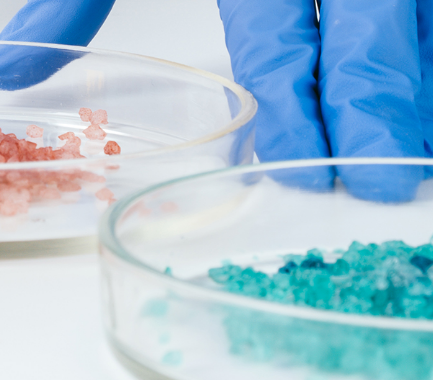Your contact
PENPET-Team - Hamburg

Tim Meister
Sales
Tel. +49 (0) 40 - 675 7 99 40
sales@penpet.de
Get in touch with us.
1,6 Hexanediol (HDO)
1,6 Hexanediol (HDO) is an organic base material for the chemical industry, which belongs to the dihydric alcohols. The very regular and simply structured compound can be produced in various synthetic methods. The substance is obtained, among other things, by the hydrogenation and reduction of adipic acid, by hydroboration of 1,5-hexadiene and by hydrolysis of 1,6-diiodohexane or 1,6-dibromohexane. The processes of reducing adipic acid with hydrogen or lithium aluminum hydride are of particular industrial importance.
The compound serves as a comonomer for the production of polyurethanes and polyesters. It can contribute equally to the hardness and flexibility of polyesters. The use of 1.6 hexanediol gives polyurethanes greater protection against hydrolysis and mechanical effects. In addition, the substance is used in the production of lubricants and plasticizers and is important for the synthesis of organic compounds such as 1,6-diaminohexane and oxepane.
At PENPET you can order the required amount of 1,6 hexanediol (HDO) in an uncomplicated and sustainable way. We look forward to receiving your inquiry for an individual offer. The solid can be delivered in 25 kg sacks, in 200 kg drums, in 950 kg IBC containers. We also supply HDO as a heating load in tank containers.
CAS no. 629-11-8
EINECS no. 211-074-0
Molecular formula: C6H14O2
Synonyms: hexane-1,6-diol, hexane diol, 1,6-dihydroxyhexane, HDO
Areas of application: Comonomer for the production of plastics from polyurethane and polyester, starting material for organic synthesis and the production of plasticizers and lubricants
More Information
1,6 Hexanediol (HDO) is a six-carbon dihydric alcohol that is a very regular organic compound. The substance consists of a hexane structure that has two terminal hydroxy groups. These give it the typical properties of alcoholic compounds and shape the reaction behavior of the compound. Typical reactions of 1,6-hexanediol (HDO) that are important in plastics production include esterification together with carboxylic acids. Due to its two functional groups, which are located at the ends of the molecular structure, 1,6-hexanediol is particularly suitable for the construction of linear structures in polymerization processes.
At room temperature, 1,6-hexanediol (HDO) is a solid in the form of colorless to white crystals. However, the compound already melts at a temperature of 45 °C. Under normal pressure, it boils at 250 °C. 1,6 Hexanediol has hygroscopic properties and attracts moisture. The substance is very soluble in water and ethanol.
When stored as directed, 1,6 hexanediol (HDO) is chemically stable. Due to its hygroscopic properties, the substance is very sensitive to moisture, so it is important to ensure that it is stored dry. In contact with oxidizing agents, the compound undergoes violent reactions.
1,6 Hexanediol is combustible, but not easy to ignite. However, dust explosions caused by the turbulence of fine particles of the substance cannot be ruled out. The vapors of the compound can also form easily flammable and explosive mixtures with the ambient air at higher temperatures. Being heavier than air, fumes can collect and spread on the ground unnoticed. This creates the risk of remote ignition of the connection. Consequently, sufficient distance to sources of ignition such as open flames, sparks, electrical devices and hot surfaces must be ensured. The combustion of 1,6 hexanediol produces, among other things, carbon monoxide, which is hazardous to health.
1,6 Hexanediol (HDO) is slightly irritating. After prolonged contact with the skin, slight reddening may occur. In the eye, dust or vapors from the compound cause a slight burning sensation, an irritating foreign body sensation and reddening of the conjunctiva. Damage to the cornea is unlikely. Particles of the substance can be removed by rinsing the eyes copiously with water. If irritation persists, seek medical attention.
Inhalation of hot vapors or aerosols of 1,6 hexanediol may cause irritation of the mucous membranes of the mouth, nose and throat. If the compound is swallowed, irritation, mild burning pain in the mouth, throat, esophagus, and stomach, and gastrointestinal symptoms such as nausea, abdominal pain, vomiting, and diarrhea are possible. In addition to drinking copious amounts of water, it is recommended to have a medical examination.
1,6 Hexanediol is not considered a hazardous substance according to the GHS classification. It is not subject to any special transport regulations. However, as a slightly water-polluting substance, 1,6 hexanediol must not be allowed to get into waste water, soil or bodies of water. In the event of leakage of the compound into the environment, the local authorities must be informed.
